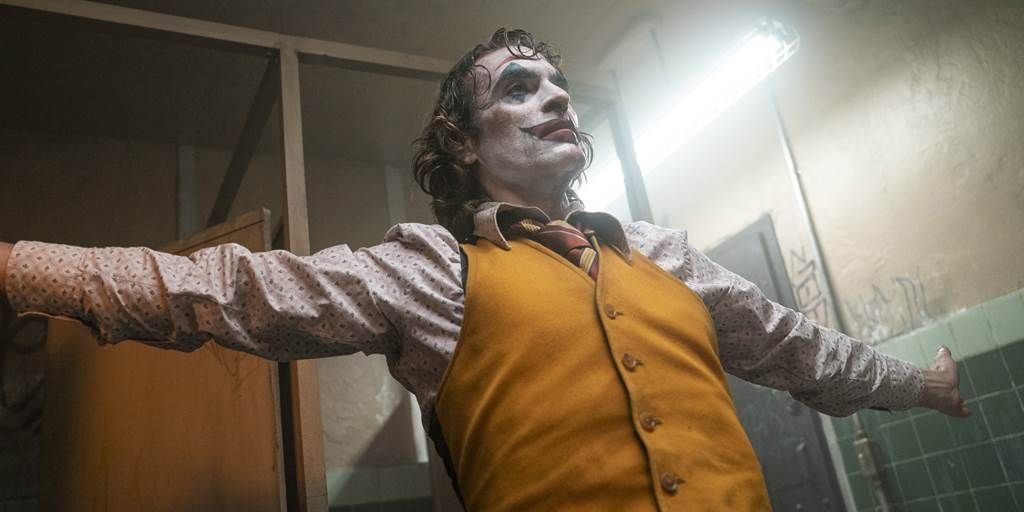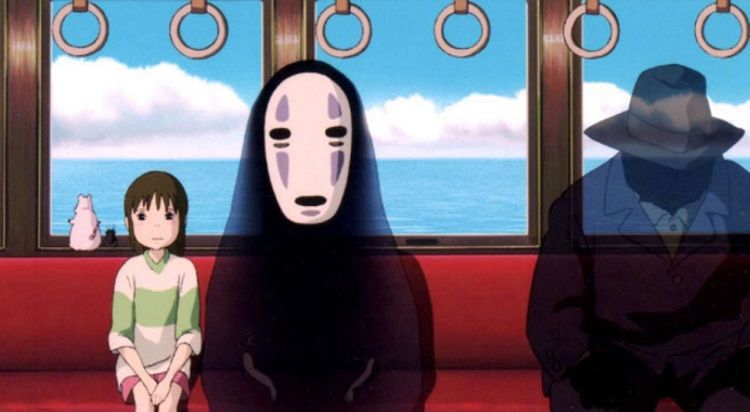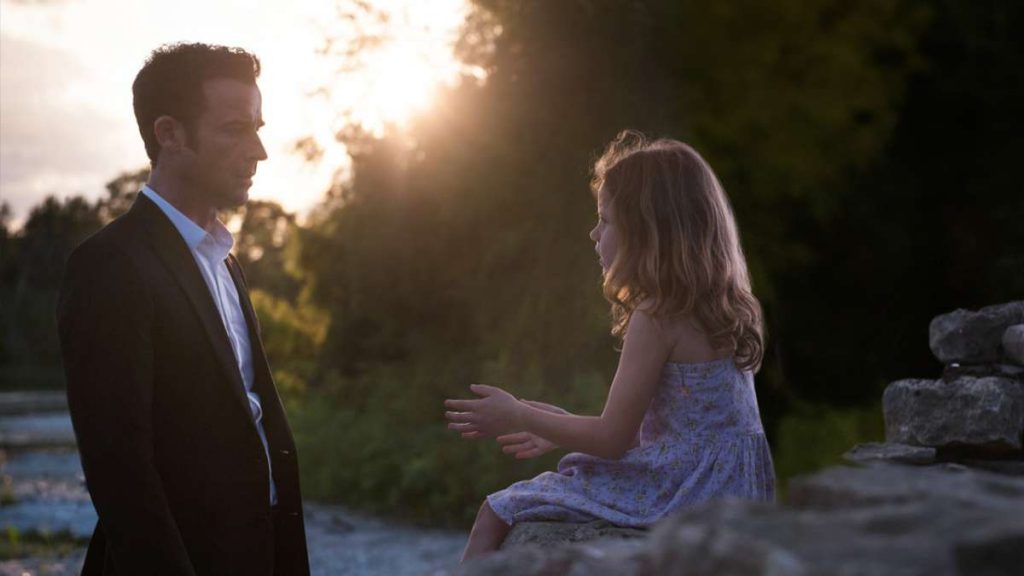THE JUNGIAN FILM SCHOOL 2020
It is only through understanding myth that we can know the soul of man.
Myth is more individual and expresses life more precisely than does science. Nights through dreams tell the myths forgotten by the day. The collective unconscious appears to consist of mythological motifs or primordial images, for which reason the myths of all nations are its real exponents.
(Carl Gustav Jung, ‘Memories, Dreams, Reflections’)

Film is our contemporary mythological art form.
No form of art goes beyond ordinary consciousness as film does, straight to our emotions, deep into the twilight room of the soul.
(Ingmar Bergman)
MODULES
Module 1: The Trickster and the Shadow
presented by Dr Helena Bassil-Morozow

In this module we will look at the trickster and the shadow and explore at their role in a range of cinematic and television narratives, with a particular focus on Liar Liar (1997), Joker (2019) and Us (2019). Social adaptation is the first issue a human child faces as they enter the world. Society has a set of rules and norms, implemented in a variety of official and unofficial codes. The individual has to internalize the ways of co-existing with others to ensure an orderly society.
In narrative storytelling, the two archetypes, the trickster and the shadow, are used to render the difficult, inconvenient and awkward as well as wonderful and funny moments of adjusting to society and its requirements. Typically, the trickster story shows the issue of social adaptation from the point of view of the individual agent and presents disruption of the social order as desirable and even necessary, while a storyline dominated by the shadow stresses the importance of society over individual impulses.
Dr Helena Bassil-Morozow
 Dr Helena Bassil-Morozow is a cultural philosopher, media and film scholar, and academic writer whose many publications include Tim Burton: The Monster and the Crowd (Routledge, 2010), The Trickster in Contemporary Film (Routledge, 2011), The Trickster and the System: Identity and Agency in Contemporary Society (Routledge, 2014), Jungian Film Studies: the Essential Guide (Routledge, 2016; co-authored with Luke Hockley) and Jung for Storytelling (forthcoming). For more information visit her website https://www.hbassilmorozow.com/.
Dr Helena Bassil-Morozow is a cultural philosopher, media and film scholar, and academic writer whose many publications include Tim Burton: The Monster and the Crowd (Routledge, 2010), The Trickster in Contemporary Film (Routledge, 2011), The Trickster and the System: Identity and Agency in Contemporary Society (Routledge, 2014), Jungian Film Studies: the Essential Guide (Routledge, 2016; co-authored with Luke Hockley) and Jung for Storytelling (forthcoming). For more information visit her website https://www.hbassilmorozow.com/.
Module 2: The Anima
presented by John Beebe

In this webinar, John Beebe will use excerpts from Hollywood movies of different eras to illuminate aspects of the anima as this archetype appears in film. He will show the opening the 1937 “Stella Dallas,” starring Barbara Stanwyck, directed by King Vidor, to illustrate the “anima woman” as described by Esther Harding. Then he will show a scene at the midpoint of the 1954 “A Star is Born,” starring Judy Garland, directed by George Cukor, in which the actress is led to become a goddess, enacting compassion while her actor husband, reduced to trickster defences in the face of his own failing powers, is testing the limits of her radiant resources. Finally John will show a scene from the end of the 2010 film “The Kids Are All Right,” directed by Lisa Cholodenko in which a Lesbian parent,
played by Annette Bening, must function as what Jungian analyst Andrew Samuels has called the “father of whatever sex” and deploy a father’s anima to limit the intrusiveness of the seductive sperm donor who has begun to challenge the integrity of her family. In each of these films, a supremely gifted Hollywood actress draws the film spectator into the interior space that accompanies anima performance in a situation in which the persona is strongly challenged. The question of how much the anima in film represents the culturally creative part of any psyche, and not just the psyches of movie directors, who until recently have usually been male, will be explored.
Dr. John Beebe
 Dr. John Beebe is a Jungian analyst and past president of the C. G. Jung Institute of San Francisco. With Virginia Apperson, he has co-authored The Presence of the Feminine in Film (2008). John has spearheaded a Jungian approach to the analysis of film that draws on Jung’s work on archetypes and psychological type. Recent publications include “Responses to a Film about Integrity” in Jungian Perspectives on Rebirth and Renewal (2017) and “Discovering the Meaning of a Film” in The Routledge International Handbook of Jungian Film Studies (2018).
Dr. John Beebe is a Jungian analyst and past president of the C. G. Jung Institute of San Francisco. With Virginia Apperson, he has co-authored The Presence of the Feminine in Film (2008). John has spearheaded a Jungian approach to the analysis of film that draws on Jung’s work on archetypes and psychological type. Recent publications include “Responses to a Film about Integrity” in Jungian Perspectives on Rebirth and Renewal (2017) and “Discovering the Meaning of a Film” in The Routledge International Handbook of Jungian Film Studies (2018).
Film Clip 1
Film Clip 2
Film Clip 3
Module 3: The Child and the Self
presented by Dr Helena Bassil-Morozow

This module explores the two archetypes, the child and the Self, and looks at their use in cinematic and television narratives, with a particular focus on Edward Scissorhands (Tim Burton, 1990), Mars Attacks (Tim Burton, 1996) and Arrival (Denis Villeneuve, 2016). In narrative storytelling, the archetypes of the child and the Self helps explore the importance of creativity, the meaning behind one’s existence and humanity’s relationship with the powers beyond its control.
The child archetype stands for motivation and creativity, and often emerges as a secondary character or a memory at the moment when the protagonist is stuck or has run out of steam. The Self is typically depicted as an omniscient and enigmatic force (such as aliens or a voice in one’s head) which speaks in riddles and helps the individual find their life purpose, or, by contrast, destroys life on earth.
Module 4: The Persona
presented by Dr Kevin Lu

In this seminar, we will use three films as our springboard to exploring Jung’s notion of the persona: Wall Street (1987), The Mask (1994) and The Talented Mr. Ripley (1999). While each film highlights the potentially pathological relationship one can have with one’s personas, they also convey the important role played by this archetypal imperative in personality development.
As with all archetypes, the persona is bipolar in nature and entering into a more integral relationship with its various qualities and characteristics is central to the project of individuation.
Dr. Kevin Lu
 Dr. Kevin Lu is the Senior Lecturer and Director of the MA Jungian and Post-Jungian Studies in the Department of Psychosocial and Psychoanalytic Studies, University of Essex. He is a former member of the Executive Committee of the International Association for Jungian Studies and a member of Adjunct Faculty at Pacifica Graduate Institute. Kevin’s publications include articles and chapters on Jung’s relationship to the discipline of history, Arnold J. Toynbee’s use of analytical psychology, critical assessments of the theory of cultural complexes, sibling relationships in the Chinese/Vietnamese Diaspora, racial hybridity, and Jungian perspectives on graphic novels and their adaptation to film.
Dr. Kevin Lu is the Senior Lecturer and Director of the MA Jungian and Post-Jungian Studies in the Department of Psychosocial and Psychoanalytic Studies, University of Essex. He is a former member of the Executive Committee of the International Association for Jungian Studies and a member of Adjunct Faculty at Pacifica Graduate Institute. Kevin’s publications include articles and chapters on Jung’s relationship to the discipline of history, Arnold J. Toynbee’s use of analytical psychology, critical assessments of the theory of cultural complexes, sibling relationships in the Chinese/Vietnamese Diaspora, racial hybridity, and Jungian perspectives on graphic novels and their adaptation to film.
Module 5: Horror and the Sublime: Psychology, transcendence and the role of terror.
presented by Christopher Hauke

Would Christianity have taken off as successfully if Christ had been imprisoned and died out of sight? The horrific image of a nearly naked man, nailed to a cross and bleeding from his hands, feet, forehead and stomach has had greater impact. What is the relationship between horror, its images and the sublime?
From the ancient through the mediaeval to Victorian and contemporary forms of the genre, horror, and terror, have been used to impress upon us the frailty of humanity and, often, the value of a spiritual alternative. In one era, the paintings of Bosch or the original German folk tales could terrify their audience, while in the present day the horror film and its digital game equivalent offer a corresponding function.
Jung was aware of how myth and archetypal imagery took on modern forms when included in contemporary visual media – and yet the psychological impact remained. Jung maintained that evil was a real entity in the world. In their stories, horror writers and filmmakers rely on such an assumption. Christopher Hauke will be discussing a Jungian perspective on horror, the sublime and the role of terror with wide-ranging examples from literature and film. You may want to keep the light on…
Christopher Hauke
 Christopher Hauke is a Jungian analyst in private practice and Senior Lecturer emeritus at Goldsmiths, University of London interested in the applications of depth psychology to a wide range of social and cultural phenomena including film. His books include Jung and the Postmodern: The Interpretation of Realities, (2000); Human Being Human. Culture and the Soul (2005) Visible Mind. Movies, Modernity and the Unconscious.(2013). He has co-edited two collections of Jungian film writing: Jung and Film. Post-Jungian Takes on the Moving Image (2001) and Jung and Film II – The Return (2011).
Christopher Hauke is a Jungian analyst in private practice and Senior Lecturer emeritus at Goldsmiths, University of London interested in the applications of depth psychology to a wide range of social and cultural phenomena including film. His books include Jung and the Postmodern: The Interpretation of Realities, (2000); Human Being Human. Culture and the Soul (2005) Visible Mind. Movies, Modernity and the Unconscious.(2013). He has co-edited two collections of Jungian film writing: Jung and Film. Post-Jungian Takes on the Moving Image (2001) and Jung and Film II – The Return (2011).
His short films, documentaries One Colour Red and Green Ray and the psychological drama Again premiered in London venues and at congresses in Barcelona, Zurich and Montreal. In addition to new film projects he is now researching the limits of rationality, and the place of the irrational in our lives. http://christopherhauke.com/
Module 6: Cultural Complexes in film
presented by Dr. Amalya Layla Ashman

This lecture will provide a brief overview of the recent applications of Jungian thought to the analysis of film, and highlight a few of the critical arguments that have shaped post-Jungian film studies. It will describe how we can approach the cinematic image as an example of a Jungian symbol, and explain why this is a powerful tool for engaging with emotion in text and from the perspective of the cinematic viewer or audience.
From here, it will define the post-Jungian concept of the cultural complex, and draw out examples of how this can provide a nuanced interpretation of the multiple layers of meaning we encounter in film.

Module 7: The Freak and Jung’s second personality
presented by Stephen Farah
In Memories, Dreams, Reflections, Jung’s biography he writes about how as a young teenager he first encountered his “second personality” a much older wiser and more powerful personality than his identity in the world at the time. This idea and experienced influenced his mature work on the psyche and arguably the seed of his later characterisation of the Self archetype.
In this webinar we will look at three films, The Ninth Configuration (1980), Being There (1979) and Shine (1996) as cinematic instances mythologizing this idea. We will also use these to examine the notion of the second personality as a “freak” and consider potential dissonances between the celluloid world and ours, when it comes to incarnating the second personality.
Stephen Farah (HOD)
 Stephen Farah, MA, is the co-founder and head of learning and research at The Centre for Applied Jungian Studies South Africa. He is an executive member of the International Association of Jungian Studies. Stephen holds an honours degree in analytical philosophy from the University of the Witwatersrand and a Master’s degree in Jungian and Post Jungian Studies from the University of Essex. Stephen’s areas of interest include psychoanalysis, film, the philosophy of language, consciousness, individuation and the simulation hypothesis. His paper ‘True detective and Jung’s four steps of transformation’ was published in The Routledge International Handbook of Jungian Film Studies. He is currently compiling and editing (with co-editor Marybeth Carter) an anthology of papers for ‘The Specter of the Other: crises and opportunity‘.
Stephen Farah, MA, is the co-founder and head of learning and research at The Centre for Applied Jungian Studies South Africa. He is an executive member of the International Association of Jungian Studies. Stephen holds an honours degree in analytical philosophy from the University of the Witwatersrand and a Master’s degree in Jungian and Post Jungian Studies from the University of Essex. Stephen’s areas of interest include psychoanalysis, film, the philosophy of language, consciousness, individuation and the simulation hypothesis. His paper ‘True detective and Jung’s four steps of transformation’ was published in The Routledge International Handbook of Jungian Film Studies. He is currently compiling and editing (with co-editor Marybeth Carter) an anthology of papers for ‘The Specter of the Other: crises and opportunity‘.
Module 8: Spirited Away and its depiction of Japanese culture.
presented by Prof Megumi Yama

The Japanese animated film (or anime) Spirited Away (2001), written and directed by Hayao Miyazaki and produced by Studio Ghibli, has become a global success. Meanwhile, I have an impression that Spirited Away also speaks to a particularly Japanese sensibility. Using this story, I would like to discuss both modern and traditional Japanese culture and psyche from a standpoint of Jungian psychology.
In the film, we are brought to a realm of the imagination populated by kami (gods and goddesses) and spirits elements, and loosely guided by a mixture of lesser male and more dominant female energies. The protagonist is a ten-year-old girl named Chihiro, who accidentally stumbles upon the other world on the way to moving to their new house. The narrative is set in a threshold area that takes the form of a Bathhouse, where is frequented by kami and staffed by mercurial yokai—the ghosts and spirits.
The Bathhouse is a contained, yet meandrous alchemical transformative place that equate to be the unconscious where archetypal energies work to drive a sense of individuation, or psychological development. Many of those inhabiting the Bathhouse represent concepts of alignment, compensation, equilibrium and the changing nature of these energies as they work together to harness a sense of wholeness. The Bathhouse presents as an unconscious fantasy world, where Chihiro has to go through all the difficulties. Not only is she transformed on a personal level, but those who are around her also find themselves evolving.
Lastly, I add that the very style of anime is particularly well aligned with the Japanese cultural tendency toward ambiguity. By this I mean that concepts are often projected through obscure and fluid objects that eventually give rise to a sense of wholeness. Such an expressive style encourages us to immerse ourselves in the power of the image.
Professor Megumi Yama
 Professor Megumi Yama is a professor of clinical psychology and depth psychology at Kyoto University of Advanced Science. She is also engaged in clinical work as a psychotherapist based on Jungian principles. She was educated in clinical psychology at Kyoto University under Professor Hayao Kawai, where she received her PhD. Her interest is in images and words—what takes place in the invisible silence. She deals with this theme by exploring clinical materials, formative art, myth, literature, and Japanese culture. She has written many articles and books, including translations. Her recent articles in English are “Ego Consciousness in the Japanese Psyche: Culture, Myth and Disaster,” in the Journal of Analytical Psychology 58 (2013), and “The Artist’s Experience of Formative Work: Japanese Painter Yasuo Kazuki and his Siberian Series,” in Jung Journal: Culture & Psyche 4 (2010).
Professor Megumi Yama is a professor of clinical psychology and depth psychology at Kyoto University of Advanced Science. She is also engaged in clinical work as a psychotherapist based on Jungian principles. She was educated in clinical psychology at Kyoto University under Professor Hayao Kawai, where she received her PhD. Her interest is in images and words—what takes place in the invisible silence. She deals with this theme by exploring clinical materials, formative art, myth, literature, and Japanese culture. She has written many articles and books, including translations. Her recent articles in English are “Ego Consciousness in the Japanese Psyche: Culture, Myth and Disaster,” in the Journal of Analytical Psychology 58 (2013), and “The Artist’s Experience of Formative Work: Japanese Painter Yasuo Kazuki and his Siberian Series,” in Jung Journal: Culture & Psyche 4 (2010).
Module 9: The Archetype of the Apocalypse in film.
presented by Stephen Farah

The archetype of the apocalypse has a rich pedigree in eschatological religion and myth. The end times features prominently in the mythological imagination and acts as a counterpoint to origin myths. The archetype of the apocalypse was also significant for Jung both personally and in his investigations of the collective unconscious. (Edinger 1999).
The archetype of the apocalypse has a rich pedigree in eschatological religion and myth. The end times features prominently in the mythological imagination and acts as a counterpoint to origin myths. The archetype of the apocalypse was also significant for Jung both personally and in his investigations of the collective unconscious. (Edinger 1999).

